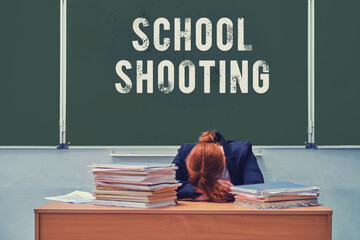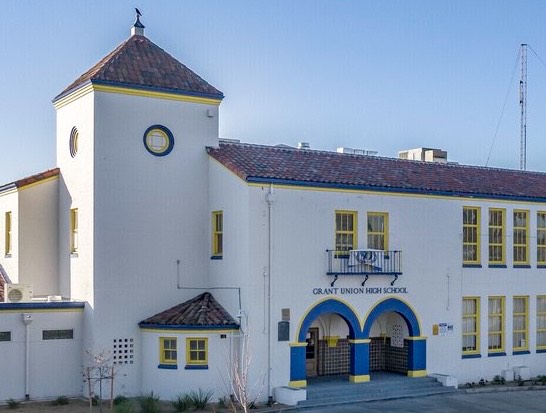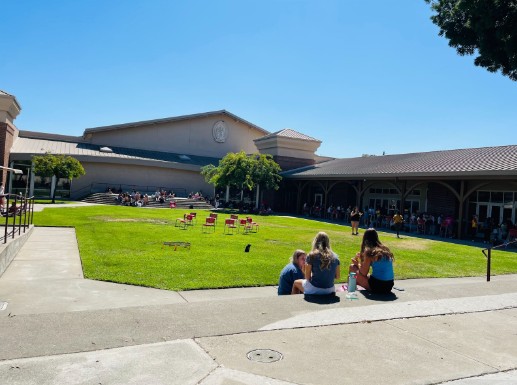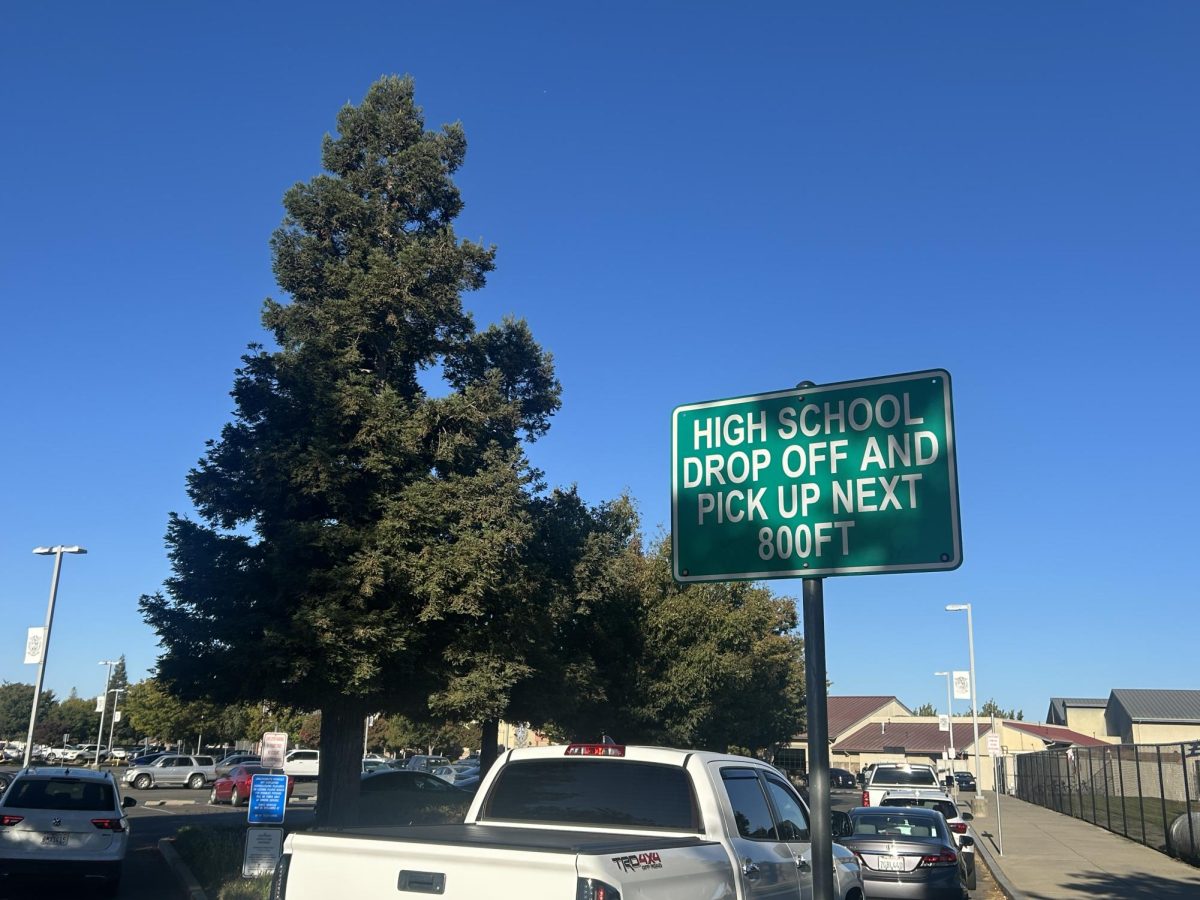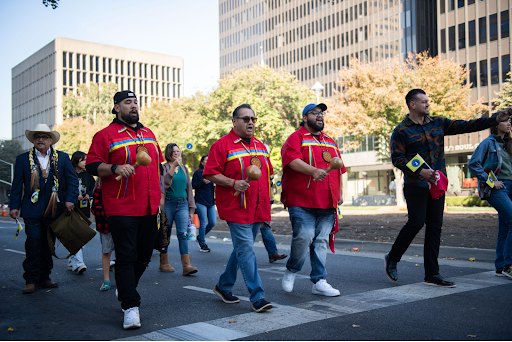In the three weeks following the Georgia Apalachee High School shooting, more than 700 students throughout the United States were arrested for making school shooting threats against their local schools, according to a New York Times review of news reports, law enforcement statements and court records.
On Friday, Sept. 13, some Sacramento high school students, including those at C.K. McClatchy High School, found themselves facing a school shooting threat of their own.
A freshman at C.K. McClatchy High, Harper Cobb, was in her Friday biology class when she first learned that a school shooting threat targeting her school was circulating on social media. Cobb doesn’t have any social media accounts herself, so her knowledge of the threats consisted mainly of rumors.
“I heard about it from other students in class,” Cobb said. “Also, I don’t have social media, I didn’t see any of the threats, I was just hearing about them from other people.”
Katherine Walsh, a junior at St. Francis High School, also heard about the school shooting threat from other students.
“Word got around really quick,” Walsh said. “I found out through one of my friends who goes to Christian Brothers, and I guess he had heard it from other people too. Apparently someone took a screenshot of an email that their principal sent to their school, and a bunch of schools that had been targeted were listed.”
The Sacramento police department later found the school shooting threats targeting McClatchy high school to be hoaxes, but they still incited panic and stress for some students and families, and Sacramento police spokesperson Anthony Gamble told the media the 14-year-old student responsible for spreading the threat was arrested on Sept. 13.
“I think the threat was pretty well handled, but some people were still very scared,” Cobb said. “There were police in front of the school, so it felt pretty safe as it could be, but there were a lot of people gone because parents were concerned, and a lot of people were getting early dismissals. A lot of people didn’t come to school the following Monday too.”
The influx of school shooting threats across the nation comes as a response, at least in part, to the Apalachee high school mass shooting on Sept. 4. According to the Georgia Bureau of Investigation, high-profile school shootings often result in an increase of “copy-cat” school shooting threats, and students and the public are more apt to report suspicious activity and concerns. Students often repost online shooting threats in an effort to “warn” their friends and family, but these reposts can inadvertently cause undue panic and spread false information.
Although St. Francis High School was not directly targeted in any of the Sacramento school shooting threats, the administration responded quickly and effectively when it learned about the social media posts through law enforcement and student notifications, contacting both the Sacramento Police Department and St. Francis families, whom they reached by email. All St. Francis families are also part of an emergency text system, so the school always has a way to communicate with parents and students.
“So several students immediately notified us later that evening, as soon as they saw the social media postings, we had already put in place our protocols just in case anything was going to happen,” said Cynthia Cost, the Dean of Students at St. Francis. “So our safety team and all of our interior personnel were aware of it and we were in contact with the director at the diocese (of Sacramento, Tony Riehl).”
The quick student response to seeing social media threats is part of St. Francis’s extensive student safety training. As the Dean, Cost handles all of the safety and discipline-related problems at St. Francis. Safety assemblies are held almost monthly, with topics ranging from the dangers of fentanyl to basic self-defense. Cost also routinely goes over evacuation policies with students, but everything is done in a manner to maximize effectiveness and lessen fear.
“I try to prepare all of our students and staff to be prepared, but not to fear, to take action, to constantly, you know, look at different avenues for escape so that everybody knows at least two avenues for escape,” Cost said. “We go through specific training every year with our staff, in addition to all of the other drills and things that we do with the students.”
While St. Francis has never experienced a school shooting, the recent local threats have reminded students and faculty that they must always stay prepared and have made St. Francis’s student safety training seem more important than usual. St. Francis administration and the Sacramento Diocese cannot share a lot of information about St. Francis policies when the school is targeted by a school shooter because of safety concerns, but Cost said everything is treated as a serious, potential threat.
“We never say, oh, you know, ignore it,” Cost said. “And that’s why as soon as I was made aware that there was a possibility (of a school shooting), we immediately alerted our own people. And then when we did get more information later that evening from students and other sources, we still acted within all of our protocols, and we immediately contacted the police to let them know that we were now seeing threats on social media.”
And although the school has, luckily, never had to fully enact all of its shooting protocols, St. Francis’s safety procedures still save lives every day. St. Francis uses an anonymous tip system, called STOPit, that is automatically installed on every student Chromebook. Students can use this application to send anonymous messages to the administration about concerns they have for themselves or for other people, and the app allows administration to communicate back with the student without knowing who they are. This app has been used to prevent and intervene in suicide, bullying and depression incidents both at St. Francis and at other schools.
“STOPit has been an exceptionally great system,” Cost said. “It has worked well. It has saved lives. People, not only have asked for help for other students here, but they have asked for help for students at other schools, or they have often put in STOPits on themselves because they don’t feel comfortable sometimes coming in, and we can’t break the STOPit encryption, but we can talk back and forth so that we can make sure someone is safe in that moment.”
St. Francis also has technology that monitors student search history on their St. Francis accounts and flags any suspicious or alarming searches. Students whose searches have been flagged then meet with Cost and Kym Weinandy, the wellness counselor. This system has also been used to save the lives of struggling students at St. Francis and surrounding high schools.
Walsh agrees with the notion that all of St. Francis’s safety procedures help prepare students for situations both at school and in the real world.
“That kind of gives me a peace of mind,” Walsh said. “It really benefits (our) students and our mindset, so we feel as safe going to school as we possibly can.”


